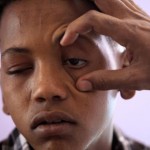Riley-Day Syndrome Facts

Why Does Riley-Day Syndrome Occur?
Riley-Day Syndrome is the result of a mutation of a specific gene, IKBKAP that is found in chromosome 9 in the human body. At least 1 in 3,700 people of Eastern European Jewish ancestry are affected by the disorder. Some adults may be carriers for the disorder, without showing any symptoms, worsening the chances of their children developing Riley-Day Syndrome.
What Are the Symptoms of Riley-Day Syndrome?
There are several symptoms associated with Riley-Day Syndrome. They include an inability to thrive, or poor growth in children, difficulty in taking food which can lead to aspiration of food particles into the lungs, causing pneumonia, as well as sweating while eating. Seizures may be present as well as episodes of high blood pressure. Children affected by Riley-Day Syndrome may hold their breath, experience alternating bouts of diarrhea and constipation, and skin blotches may occur. Frequent bouts of vomiting are common as well.
Other common symptoms include an unsteadiness in gait or poor coordination, poor muscle tone, a lack of the sense of taste, scoliosis as well and an unusually smooth tongue. One of the hallmark symptoms is the insensitivity to pain, making the syndrome very dangerous for young children. Many sufferers do not experience normal pain sensations, such as chafing of the skin, dry eyes, burns and pressure. This insensitivity does not always continue for internal pain, and many sufferers can feel internal pain, such as menstrual cramps.
How is Riley-Day Syndrome Diagnosed?
In order to determine if a child is suffering from Riley-Day Syndrome, a doctor will observe their symptoms. If it is believed that the child may have the disorder, further genetic testing on chromosome 9 is required. Other tests include a histamine test that is performed under the skin. A histamine, which normally produces a hive when injected under the skin is injected into the child. If they do not develop a hive, they are likely to have Riley-Day Syndrome.
What Are the Treatment Options?
Due to the lack of sensitivity to pain, the first priority in treating Riley-Day Syndrome is to protect the child from injury. In the event that seizures are present, anticonvulsive medication is typically prescribed. Eye drops can combat the symptom of dry eyes and anti-emetics are administered to control vomiting.
Thanks to new treatment methods and increased monitoring of children affected with Riley-Day Syndrome, survival rates are increasing. Now, a child with Riley-Day Syndrome has a 50% chance of living past the age of thirty, and these rates are continuing to improve. The key to successful treatment of Riley-Day is constant monitoring and treatment for side effects that can be life threatening.



